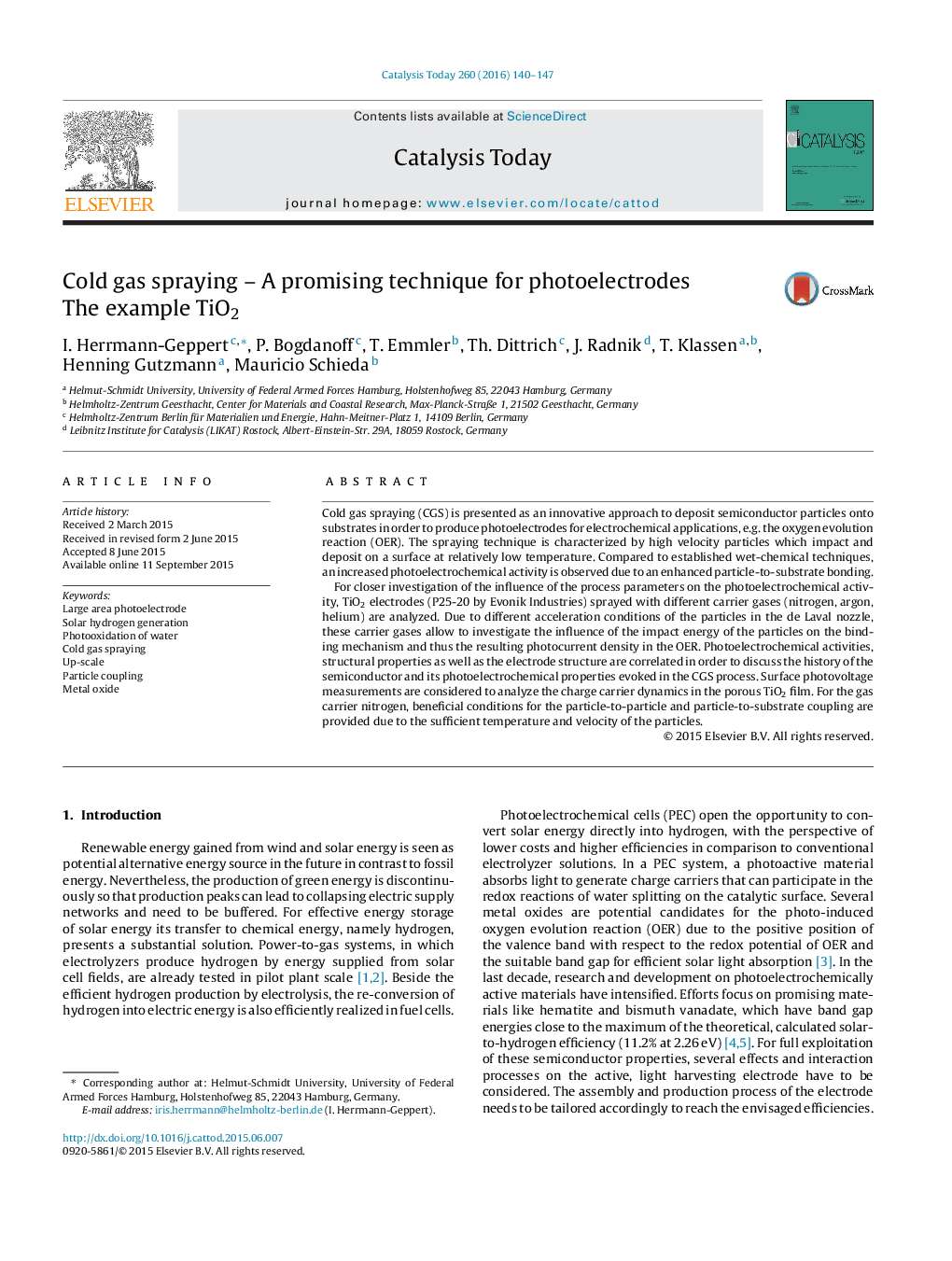| کد مقاله | کد نشریه | سال انتشار | مقاله انگلیسی | نسخه تمام متن |
|---|---|---|---|---|
| 53372 | 46964 | 2016 | 8 صفحه PDF | دانلود رایگان |

• Cold gas spraying, a kinetic deposition technique, presents an innovative approach to fabricate large-area photoelectrodes (up to the square metre range).
• For an optimized particle linking within the film and to the substrate gas carrier and temperature need to be adjusted.
• Surface photovoltage measurement gives closer insight in the dynamics of the generated charge carriers within the porous TiO2 network.
Cold gas spraying (CGS) is presented as an innovative approach to deposit semiconductor particles onto substrates in order to produce photoelectrodes for electrochemical applications, e.g. the oxygen evolution reaction (OER). The spraying technique is characterized by high velocity particles which impact and deposit on a surface at relatively low temperature. Compared to established wet-chemical techniques, an increased photoelectrochemical activity is observed due to an enhanced particle-to-substrate bonding.For closer investigation of the influence of the process parameters on the photoelectrochemical activity, TiO2 electrodes (P25-20 by Evonik Industries) sprayed with different carrier gases (nitrogen, argon, helium) are analyzed. Due to different acceleration conditions of the particles in the de Laval nozzle, these carrier gases allow to investigate the influence of the impact energy of the particles on the binding mechanism and thus the resulting photocurrent density in the OER. Photoelectrochemical activities, structural properties as well as the electrode structure are correlated in order to discuss the history of the semiconductor and its photoelectrochemical properties evoked in the CGS process. Surface photovoltage measurements are considered to analyze the charge carrier dynamics in the porous TiO2 film. For the gas carrier nitrogen, beneficial conditions for the particle-to-particle and particle-to-substrate coupling are provided due to the sufficient temperature and velocity of the particles.
Cold gas sprayed hematite, tungsten oxide, titanium oxide and bismuth vanadate samples (30 cm × 30 cm).Figure optionsDownload high-quality image (204 K)Download as PowerPoint slide
Journal: Catalysis Today - Volume 260, 1 February 2016, Pages 140–147